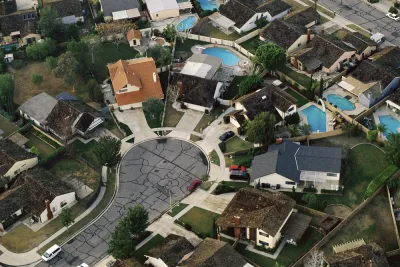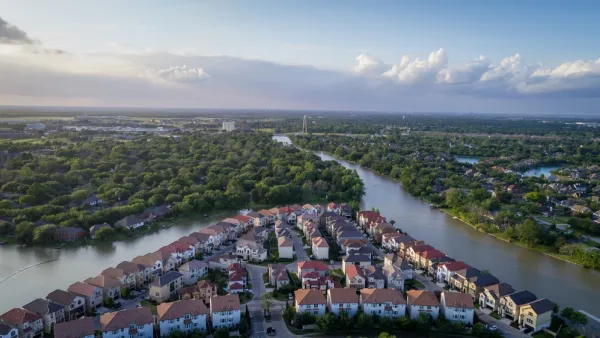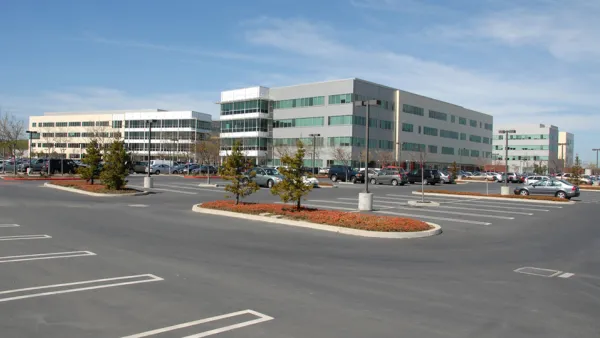Charles Marohn analyzes Lafayette, Louisiana for how well (or poorly) its districts measure up in terms of infrastructure investment versus tax revenues. The results are telling.

After a research effort to determine why the city of Lafayette can't "keep up" with its own maintenance, Charles Marohn gives us a telling visual. "When we finished, we had a three dimensional map showing what parts of the city generated more revenue than expense (in business terms, this would be called profit) and what parts of the city generated more expense than revenue (again, in business terms, this is considered a loss)."
The results back up Marohn's usual thesis: that wanton infrastructure investments in low-slung suburban areas will not pay for themselves. In the long term, they'll run up a deficit.
"There are some remarkable things to note right off the top. When we added up the replacement cost of all of the city's infrastructure -- an expense we would anticipate them cumulatively experiencing roughly once a generation -- it came to $32 billion. When we added up the entire tax base of the city, all of the private wealth sustained by that infrastructure, it came to just $16 billion. This is fatal."
For more, see Marohn's follow-up article, "Poor Neighborhoods Make the Best Investments."
FULL STORY: The Real Reason Your City Has No Money

National Parks Layoffs Will Cause Communities to Lose Billions
Thousands of essential park workers were laid off this week, just before the busy spring break season.

Retro-silient?: America’s First “Eco-burb,” The Woodlands Turns 50
A master-planned community north of Houston offers lessons on green infrastructure and resilient design, but falls short of its founder’s lofty affordability and walkability goals.

Delivering for America Plan Will Downgrade Mail Service in at Least 49.5 Percent of Zip Codes
Republican and Democrat lawmakers criticize the plan for its disproportionate negative impact on rural communities.

Test News Post 1
This is a summary

Test News Headline 46
Test for the image on the front page.

Balancing Bombs and Butterflies: How the National Guard Protects a Rare Species
The National Guard at Fort Indiantown Gap uses GIS technology and land management strategies to balance military training with conservation efforts, ensuring the survival of the rare eastern regal fritillary butterfly.
Urban Design for Planners 1: Software Tools
This six-course series explores essential urban design concepts using open source software and equips planners with the tools they need to participate fully in the urban design process.
Planning for Universal Design
Learn the tools for implementing Universal Design in planning regulations.
EMC Planning Group, Inc.
Planetizen
Planetizen
Mpact (formerly Rail~Volution)
Great Falls Development Authority, Inc.
HUDs Office of Policy Development and Research
NYU Wagner Graduate School of Public Service





























